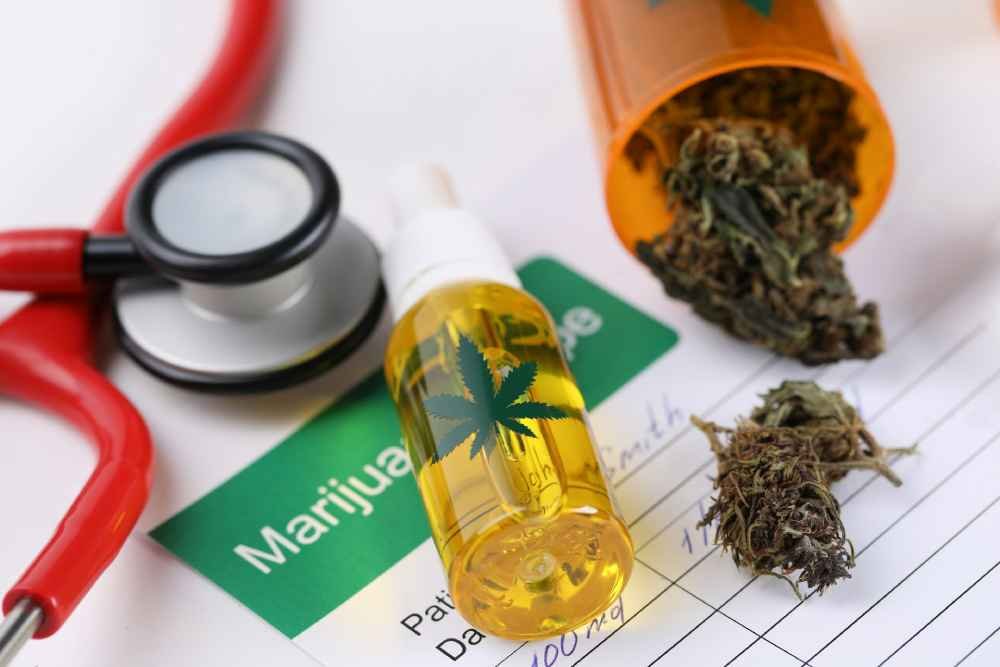Cannabis Compounds Unveiled: The CBD and THC Saga
The cannabis plant has long been a subject of fascination and controversy, but two of its compounds have recently taken center stage: Cannabidiol (CBD) and Tetrahydrocannabinol (THC). As research progresses and societal attitudes shift, understanding these cannabinoids has become increasingly important. This article delves into the world of CBD and THC, exploring their properties, effects, and potential applications.
Contents
The Dynamic Duo: CBD vs. THC
CBD and THC are both cannabinoids found in cannabis, but they interact with the body differently. THC is psychoactive, producing the “high” associated with marijuana use. CBD, however, is non-intoxicating and has gained attention for its potential therapeutic benefits without altering consciousness. Understanding these fundamental differences is crucial for anyone considering their use.
The Endocannabinoid System: Nature’s Hidden Network
The human body contains an endocannabinoid system (ECS), a complex network of receptors that play a role in regulating various physiological processes. THC directly binds to these receptors, particularly CB1 receptors in the brain, leading to its psychoactive effects. CBD’s interaction with the ECS is more subtle and indirect, potentially modulating the system’s overall function. This intricate dance between cannabinoids and our body’s natural systems forms the basis of their potential therapeutic effects.
Therapeutic Horizons: Potential Health Benefits
Both CBD and THC have shown promise in various medical applications. CBD is being studied for its potential anti-inflammatory, analgesic, and anxiolytic properties. It has already been approved for treating certain types of epilepsy. Despite its psychoactive nature, THC, has shown potential in managing chronic pain, reducing nausea in cancer patients, and also stimulating appetite in individuals with certain medical conditions. As research progresses, the list of potential applications continues to grow.
The legal status of CBD and THC varies widely across the globe. In many countries, CBD derived from hemp (cannabis with less than 0.3% THC) is legal, while THC remains more strictly regulated. This complex legal landscape creates challenges for consumers, healthcare providers, and businesses alike. It’s crucial for individuals to understand the specific regulations in their area before using or purchasing these products.
From Plant to Product: Consumption Methods
The journey of CBD and THC from cannabis plant to consumer product is a fascinating process that offers users a variety of consumption options. Each method provides a unique experience and set of benefits:
- Oils and Tinctures: These liquid forms are taken sublingually (under the tongue) for quick absorption into the bloodstream. They offer precise dosing and are popular for both medicinal and recreational use.
- Edibles: From gummies to chocolates and baked goods, edibles provide a discreet and often enjoyable way to consume cannabinoids. They typically have a slower onset but longer-lasting effects.
- Topicals: Creams, lotions, and balms infused with CBD or THC are applied directly to the skin for localized relief. They’re often used for pain, inflammation, and skin conditions.
- Vaporizers: Vaping heats cannabis flower or concentrates to release cannabinoids without combustion. This method offers quick onset of effects and is considered less harmful than smoking.
- Smokable Flower: Traditional smoking of cannabis flower remains popular, offering immediate effects but potentially posing respiratory risks.
- Capsules and Pills: These provide a familiar, pharmaceutical-like approach to consumption, appealing to those who prefer a no-fuss method.
- Transdermal Patches: These deliver a steady, controlled dose of cannabinoids through the skin over an extended period.
Each method has its own onset time, duration, and bioavailability. Factors like personal preference, desired effects, and medical needs all play a role in choosing the most suitable consumption method. As the cannabis industry evolves, we can expect to see even more innovative and targeted delivery systems emerge, further expanding the options for consumers.
Safety First: Potential Side Effects and Precautions
CBD and THC, while generally well-tolerated, can cause side effects. CBD may lead to fatigue, appetite changes, and diarrhea, while THC can cause dry mouth, red eyes, impaired memory, and coordination issues. In some cases, THC may increase anxiety or heart rate, especially in high doses or sensitive individuals.
Approach these compounds with caution. Consult a healthcare professional before use, especially if you have existing health conditions or take medications. Start with low doses, be aware of legal regulations, and ensure product quality. Pregnant or breastfeeding individuals should avoid these compounds due to potential risks.
The Future of Cannabinoid Research
As interest in CBD and THC grows, so does the body of research surrounding these compounds. Scientists are exploring their potential in treating a wide range of conditions, from chronic pain and epilepsy to anxiety and neurodegenerative diseases.
However, much of the current evidence is based on animal studies or small-scale human trials. Larger, long-term studies are needed to fully understand the effects and potential of these cannabinoids. The future of cannabinoid research holds exciting possibilities for medical advancements and improved understanding of these complex compounds.

